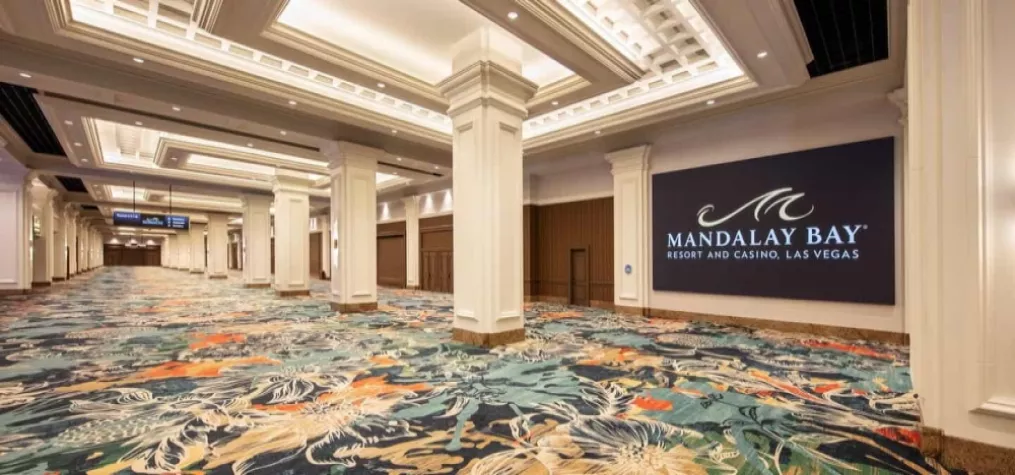One of the most iconic names on the Las Vegas Strip just got an upgrade. Mandalay Bay has everything that your business needs from a refreshed convention space designed to inspire productivity and creativity, to an impressive selection of world-class restaurants and amenities. If you're looking for a venue that's both inviting and innovative, you have to be here.
New Wave Experiences
Mandalay Bay continues to invest in a new wave of enhancements both in the convention space and within the resort as a whole. New restaurant openings including Orla by Michael Mina, drawing inspiration from the award-winning chef’s childhood in Egypt and with flavors and décor inspired by the spices found in markets common to coastal Mediterranean towns, as well as Caramá by Wolfgang Puck, bringing the essence of Italy and spirit of Wolfgang into one concept, are recent additions. The Four Seasons Hotel Las Vegas also experienced a recent remodel of all 424 rooms. Swingers, a high-end, adults-only golf and entertainment concept will debut in Fall 2024.
Enhanced Technology
Creating a truly effective conference venue requires careful thought into what a business needs: the right technology, capacity, and inspiration to bring ideas to the next level. As part of the resort’s refresh, Mandalay Bay implemented state-of-the-art technology upgrades, installing cutting-edge Cat6A Ethernet cabling throughout the convention center. This advancement doubles the frequency of data transmission, enabling lightning-fast speeds up to 9400% faster. The convention center now boasts 11 dynamic digital walls, spanning up to 24' x 13', strategically positioned for brand placements, sponsorships and targeted event messaging. Additionally, attendees can benefit from 20 double-sided 55" mobile flexible display units, facilitating effortless navigation to meeting rooms and events. RFID locks were installed on all meeting room doors, and over 200 motion detection cameras have been placed throughout the space.
Refreshing New Design & Fine Art
The newly remodeled convention space provides a bright and vibrant atmosphere that complements Mandalay Bay's tropical-inspired brand. Featuring white-washed walls and ceilings adorned with bold floral patterns in cerulean and coral tones, the space is complemented by warm walnut accent walls. In addition to the redesign of all pre-function spaces, meeting rooms and ballrooms, Mandalay Bay's 1 million square feet of exhibit space has undergone a rejuvenation, including new paint, covered pillars and relocated strobe lights.
Sustainable Spectacles
Mandalay Bay is committed to Focused on What Matters and creating more responsible meetings. Refillable water stations all available around the resort, cutting unnecessary plastic usage from single-use bottles.
The Mandalay Bay campus’ recent upgrades represent a bold step forward in redefining the Las Vegas experience. With a focus on innovation, sustainability, and unparalleled service, Mandalay Bay sets a new standard for excellence in business hospitality. Whether you're seeking cutting-edge conference facilities, world-class dining options, or simply a luxurious retreat, an unparalleled meeting experience awaits.



Add new comment